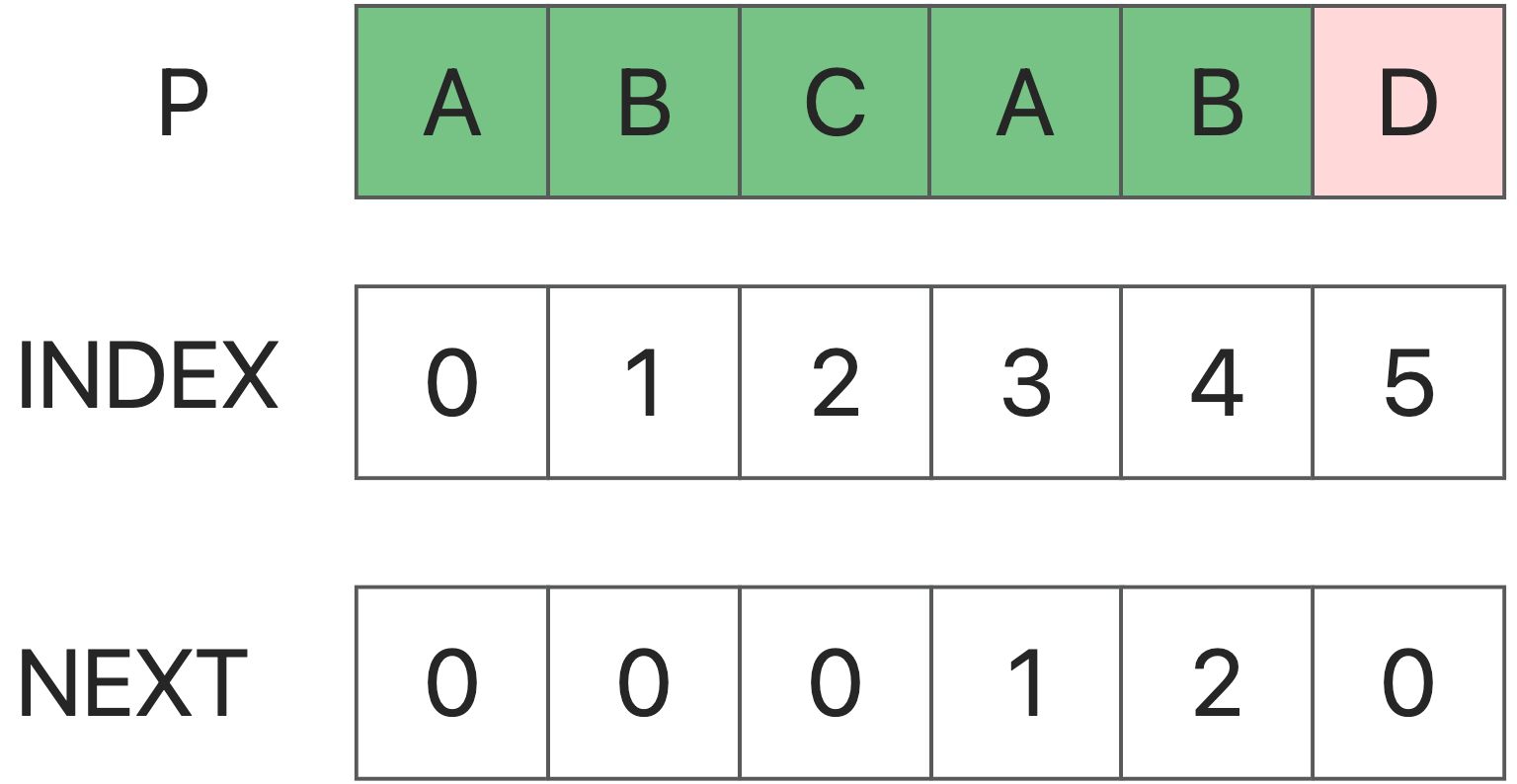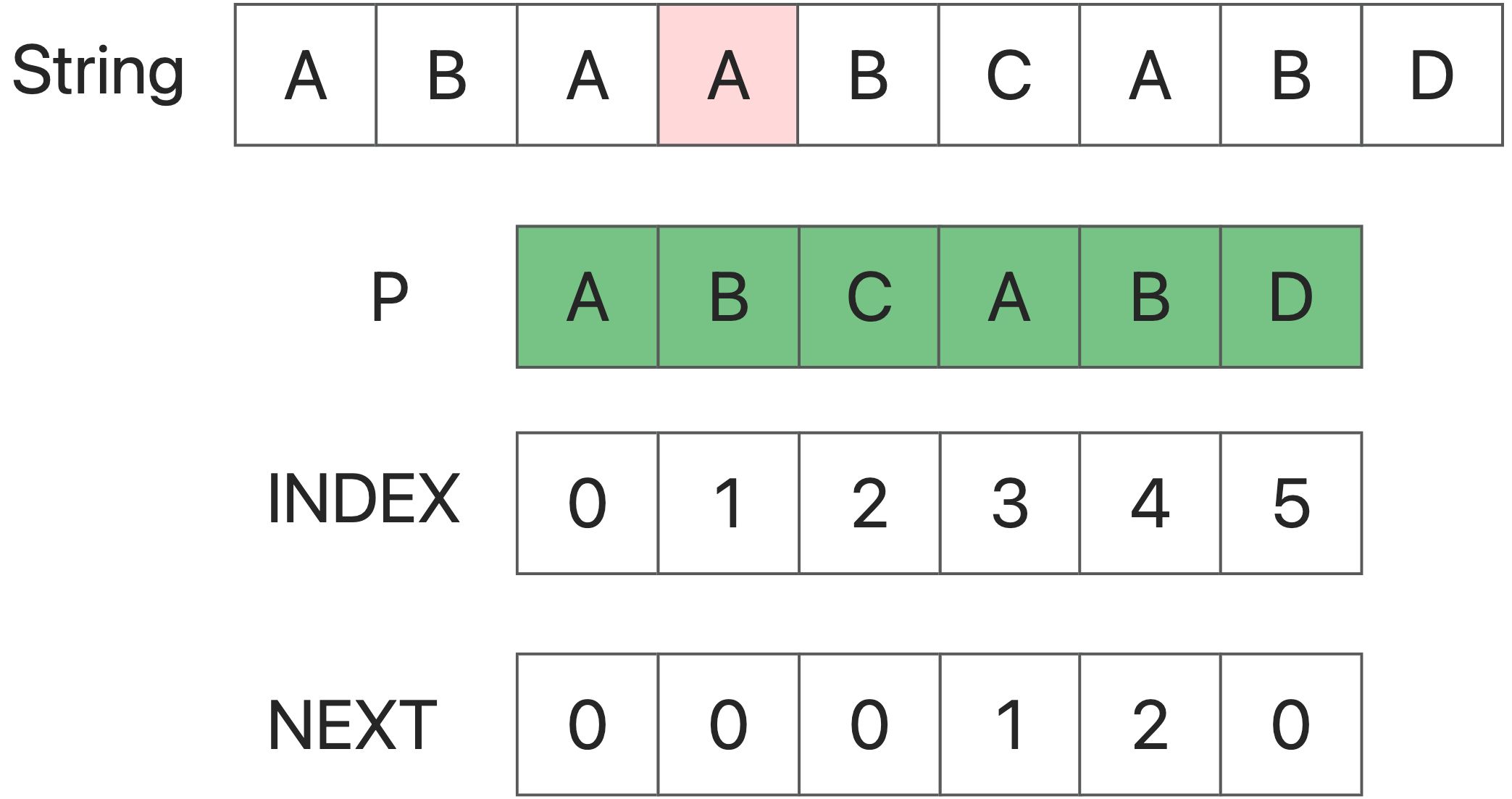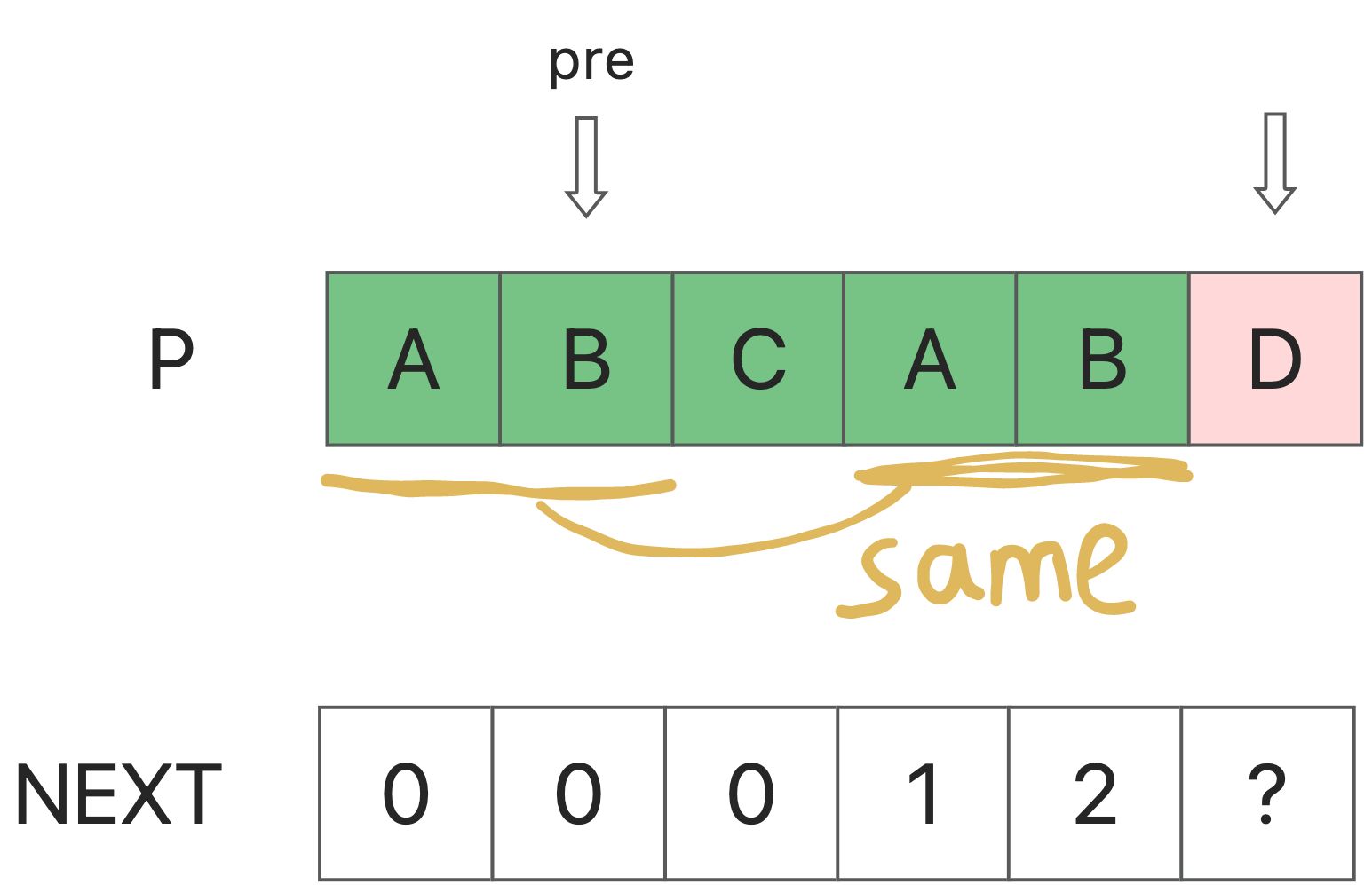KMP:
The KMP (Knuth-Morris-Pratt) algorithm is an algorithm for string search that finds the occurrence of a word W within a text string S.
The basic idea is that when a substring does not match the target string, it is known enough information to be able to determine that the next search step will not result in a missed check of the target string. In this way, the algorithm does not perform an invalid check.
The following are the steps of the KMP algorithm:
- Construct a “partial match table” (also called a “failure function”). This is an array, and for a given lookup word, each element of the table contains the position where the lookup word should jump when the match fails.
- Use this table to perform string searches. When a match failure occurs in a text string, you can skip directly to the previous part that is known not to match.
Why KMP
In the first approach, if the comparison from String[i] fails, the algorithm directly starts trying to compare from S[i+1]. This kind of behavior is a typical “not learning from previous mistakes”.We should note that a failed match will provide us with valuable information - if the match between String[i : i+len(P)] and P fails at the r th position, then from S[i] : the first (r-1) consecutive characters must be exactly the same as the first (r-1) characters of P

Therefore, we can skip those unlikely strings as much as possible to optimize our method。
Give a Exapmle:

First, P[5] fails to match, then it means that S[0:5] is equal to P[0:5], which is “abcab”.
Now let’s consider: from S[1], S[2], S[3] Is there any chance that the initial matching attempt will succeed?
When we start in S[1], it won’t success. Because we can see : P[1] != P[0], But P[1] = S[1], So P[0] != S[1].
As same in S[2].
But when we start in S3: P[0] = P[3], S[3] = P[3], so P[0] = S[3].
We can find that in S[3], it is possible to match successfully. And we will find that if it is known that S and P are the same within the length L, then whether any i can be used as the starting point of matching depends only on whether P[0] = P[i] are equal. Here we can get the core next array of the KMP algorithm
Next Array
The next array is for the pattern string. The next array of P is defined as: next[i] represents a substring of P[0] ~ P[i], so that the first k characters are exactly equal to the largest k of the last k characters. In particular, k cannot be i+ 1 (Because this substring has only i+1 characters in total, it must be equal to itself, so it is meaningless). In fact, it is to get the maximum length of the longest same prefix and suffix in the P string when different starting points i.

NOW, How to use next array match
1 | int i=0; |

First: we use two point to mactch the Strings. The problem is how to change the point?
Second:
String[i] != P [j] ,now we need change the j to find a new start which prefix of String is equals to P. Only in this way it may success. So, next array is useful: j = next[j]
How to get next array
1 | void getNext(String p, int [] next) |
this code use a small skills:make next[0] = -1 . you can remember it ,it will make easier to code;
dynamic programming:
next[i] means the max(i) that p[0,next[i]] = p[i-next[i],i]
so, for if we know next[0],next[1],…next[i-1], how to know next[i]?
set next[i-1] = pre
ifp[i] = p[pre+1] , it means next[i] = pre+1
else if p[i] != p[pre+1], it means p[i-pre-1,i-1] = p[pre-1]
we should reduce the pre. pre = next[pre]

Code:
1 | /** |